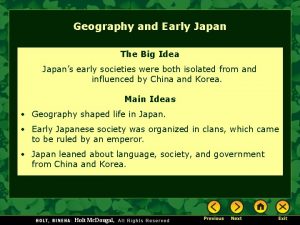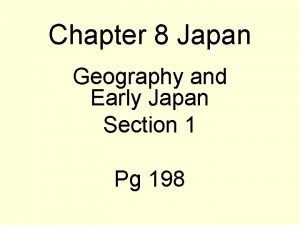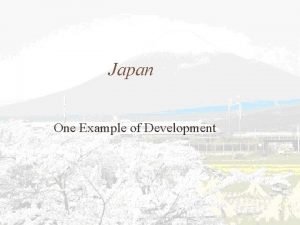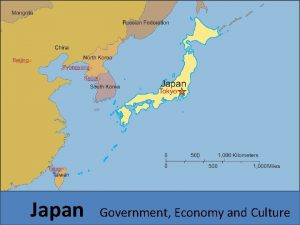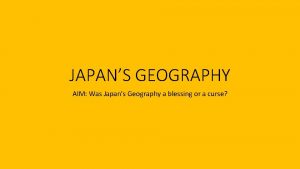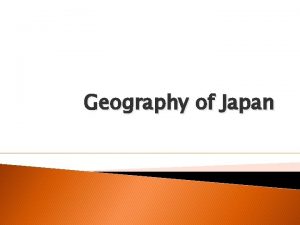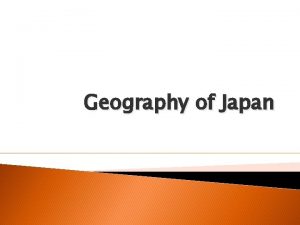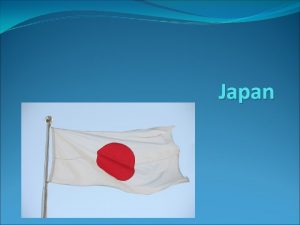5 1 Notes Early Japan Japans Geography Japan





- Slides: 5

5 -1 Notes: Early Japan

Japan’s Geography • Japan is a chain of islands (over 3, 000) in the Pacific Ocean • Most of Japan covered by mountains, volcanoes – only 20% of land is suitable for farming • To meet food needs, many Japanese turned to the sea • Constant contact with sea compelled the Japanese to build many villages by the sea and trade by boat • Japan was difficult to reach, and so it developed a uniquely independent culture

Japan’s First Settlers • Earliest settlers arrived in Japan between 30, 000 and 10, 000 B. C. E. • Around 300 B. C. E. , a new group of people (named the Yayoi because of the location of their remains) arrived • Yayoi introduced farming, growing rice in paddies, and pottery • Also skilled metalworkers who made axes, knives, and hoes (iron), and swords, spears, and bells (bronze) • By A. C. E. 300, Yayoi began to organize themselves into clans, or groups of families related by blood or marriage • Clans were run by warriors who protected the people in return for portions of harvest

The Yamato & Prince Shotoku • • • 500 A. C. E. – Yamato clan strong enough to rule most of Japan – Jimmu, the Yamato leader, took the title “emperor of heaven, ” – His line has never been broken 600 A. C. E. – Shotoku, a Yamato prince, takes power on behalf of his aunt, empress suiko Shotoku was heavily influenced by China Created a constitution in which all power was given to the emperor – Most rules based upon Confucianism Built many Buddhist temples around Japan 646 A. C. E. (after Shotoku), the Yamato began the Taika, or Great Change – This divided Japan into provinces and allowed government officials to collect taxes instead of clan leaders

Shinto • Early Japanese believed that all natural things (even winds, mountains, rivers etc. ) were alive and had a spirit • This belief is called animism • When people needed help, they asked nature spirits, called kami, for help • To honor the kami, the Japanese performed rituals (involving dancers, musicians, and priests) at shrines • These early beliefs evolved into Shinto, or “way of the spirits, ” one of Japan’s oldest religions
